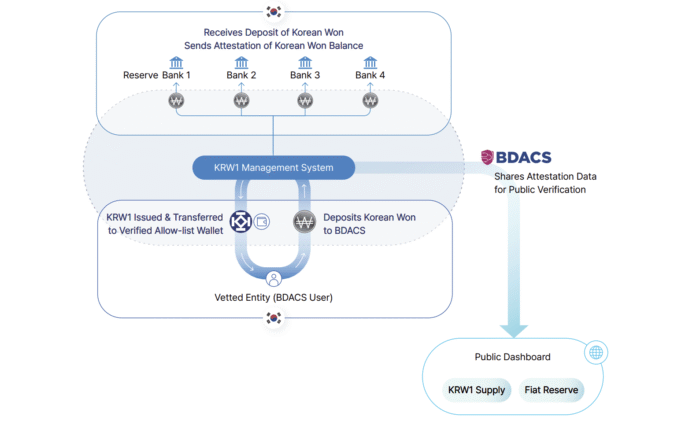The global stablecoin market has witnessed a significant development with the introduction of the first regulated StableCoin connected to the international version of the Chinese Yuan (CNH) and a South Korean Won (KRW) StableCoin. This move is expected to facilitate cross-border transactions and increase the demand for these currencies internationally.
According to Reuters, the financial technology company Anchorx debuted the Axcnh Yuan-Pegled Stablecoin at the summit in Hong Kong, marking a regulatory pivot in the stablecoin market. The stablecoin is designed to support the Belt and Road Initiative, an infrastructure project that aims to connect China with the Middle East, Europe, and other regions through physical roads and maritime trade routes.
BDACS, a Digital Asset Infrastructure, also announced the launch of KRW1, a Korean-backed stable coin, on Thursday. Both KRW1 and Axchn are over-collateralized stable coins, meaning they are fully backed by FIAT currency deposits or state debt instruments held by a custodian. This ensures that the stablecoins are secure and reliable, reducing the risk of volatility and inflation.
A diagram that shows how the KRW1 stablecoin is managed. Source: Bdacs
Stablecoins have become a sector of geo-strategic importance, as sovereign governments seek to put their fiat currencies on digital rails to increase international demand. By doing so, they hope to compensate for the inflationary effects of currency pressure. The interaction between stablecoins, fiat currencies, inflation, and public debt is complex and multifaceted.
The Relationship Between Stablecoins and Fiat Currencies
The traditional financial system is slow and often requires a robust infrastructure that may not be available in developing areas. Additionally, currency controls in certain jurisdictions can hinder the demand for fiat currencies. However, by placing fiat currencies on blockchain rails, international demand can increase, becoming more accessible to the average person. This can help compensate for price increases caused by currency inflation.
The US government’s public debt exceeded the $37 trillion mark, setting a new global record. Source: US debt clock
Currency inflation leads to price increases, as the demand for the currency is not proportional to the additional supply generated by money printing. Over-collateralized stablecoin issuers, such as Tether and Circle, help solve this problem by supporting state debt instruments and fiat money for their digital tokens. This makes the tokens accessible to everyone with a mobile phone and a crypto wallet.
The Impact of Stablecoins on Public Debt
In essence, these companies enable people around the world to become indirect buyers of bonds, increasing the market for these assets, reducing income from state-based debts, and alleviating the burden of debt. Tether is one of the largest providers of US state bonds, exceeding the holdings of industrialized countries, including Canada, Norway, and Germany.
Anton Kobyakov, an advisor to Russian President Vladimir Putin, recently stated that the US government is attempting to compensate for its $37 trillion debt with stablecoins and gold to strengthen trust in the declining US dollar. As the stablecoin market continues to evolve, it is likely to play an increasingly important role in shaping the global economy.
For more information on the first Chinese stablecoin debut and the heated stablecoin race, visit https://cointelegraph.com/news/first-chinese-stablecoin-debut-race-heats-up?utm_source=rss_feed&utm_medium=rss_tag_altcoin&utm_campaign=rss_partner_inbound

